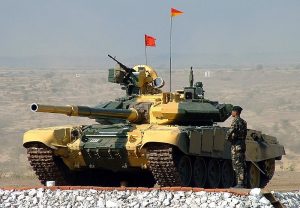After the first in-person meeting between the leaders of Australia, India, Japan, and the United States, we can rest assured that the Quad, which has been largely a paper tiger since Australia informally withdrew in 2007, is being actualized. Now that the Quad has been reinvigorated, the logical next step is to examine the organization’s viability in the defense sphere – especially since the intent of the Quad is to counter China’s growing military capacity. An honest evaluation of the Quad militarily will highlight the fact that India is hampering its overall effectiveness. What’s interesting is that this is by choice.
The non-alignment principle that India adhered to following its independence in 1947 has slowly evolved into a policy in which India attempts to partner equally with the United States and Russia to maintain a level of strategic autonomy. Essentially, by not relying too heavily on either side, India is prevented from having to side with one nation or the other on any particular issue. In terms of policy, this plays out through India establishing 2+2 dialogues with both Russia and the United States, balancing military exercises with one nation with corresponding ones with the other, and by following delivery of India’s first American-made MH-60R helicopters with Russian S-400 batteries.
As the idiom says, a chain is only as strong as its weakest link – and India’s continued procurement of Russian defense equipment will continue to make it the weakest member of the Quad.
Until recently, India could make defense procurement decisions based on three factors: the ability of the equipment to meet the predetermined requirements, the price, and the extent to which the acquisition would benefit India’s indigenous defense industry. For the most part, this has worked. India has been able to amass a military that some consider the fourth strongest in the world, albeit one envisioned to operate in a non-aligned world. With that said, India’s participation in the Quad necessitates an additional point in India’s decision matrix: the level of commonality between the defense article being purchased and the equipment used by other Quad partners.
Based on geography, a Quad versus China contingency will likely be biased to the air and maritime domains. Success in these areas will rely on secure networks that will allow an instantaneous flow of critical information. As an example, Japan and Australia have both invested in Aegis fire control technology that will enable them to share situational awareness with U.S. ships and to accept weapons cueing data from them and vice versa. Russian technology will never have this level of interoperability with the United States or any other of the Quad partners, decreasing over the overall effectiveness of the pact.
Not only will Russian equipment prove incompatible with India’s partners in a future fight, but continued partnership with the Russians will limit Indian access to the equipment that the other Quad members will operate. U.S. technology release decisions are the result of a lengthy interagency process that is finally underwritten by Congress. A consideration in the outcome of decisions regarding the release of advanced technology is the potential for unauthorized disclosure to a foreign entity, intentional or unintentional. As a case in point, India’s upcoming installation of Russia’s S-400 air defense system will likely give the U.S. interagency pause when deliberating on releasing any potential technology that could be compromised through interfacing with or even proximity to such a system.
Turkey, a NATO ally and a country that produces components for the F-35, was removed from the program due to its decision to procure the S-400. Just as NATO with a non-F-35 equipped Turkey will be less effective than NATO with an F-35 capable Turkey, a Quad in which India lacks the same high-end equipment as the other partners will be less capable than a Quad in which India has the same high-end equipment as Australia, Japan, and the United States.
Indian policymakers have successfully avoided choosing between a close strategic relationship with the United States or Russia. But they have chosen to enter into a security pact that is meant to hedge against China, and must now decide between being a worthwhile member of the Quad or continuing the Russia-United States balancing act.

































